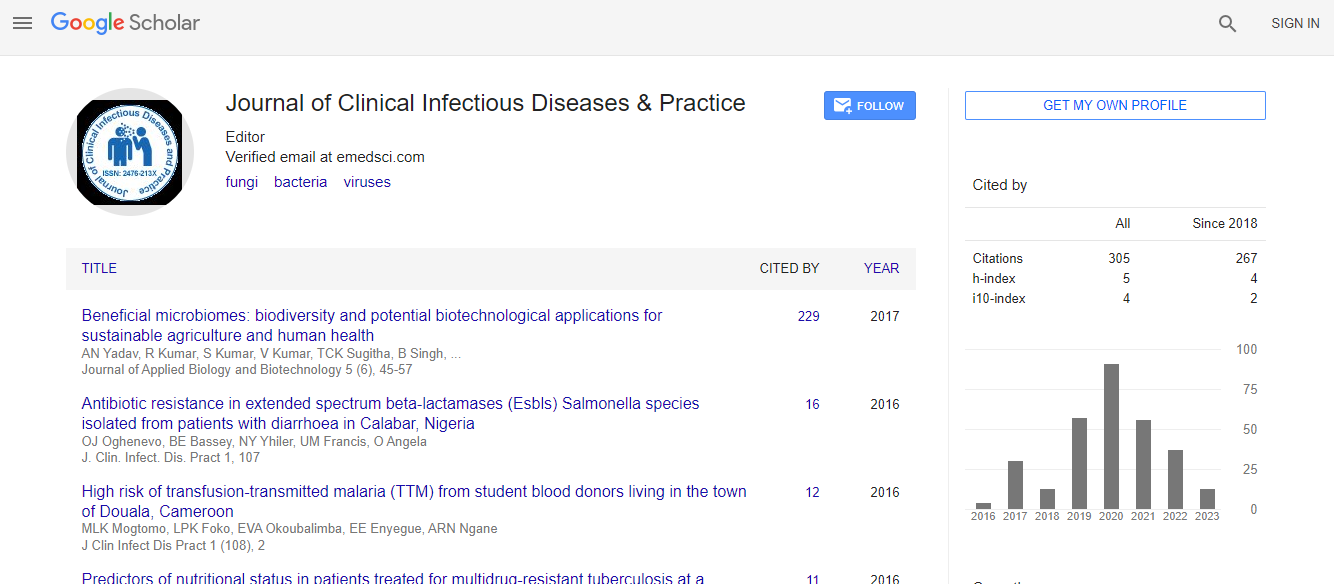Research Article
Perception of HIV/AIDS among Rural Secondary Students in UGA, Aguata Local Government Area, Anambra State, Nigeria
*Corresponding Author: CC Umenzekwe, Nnamdi Azikiwe University Teaching Hospital, Nnewi, Anambra State, NigeriaReceived Date: Apr 23, 2018 / Accepted Date: May 09, 2018 / Published Date: May 16, 2018
Citation: Umenzekwe CC, Onyido AE, Anumba JU, Iroezindu MO, Unigwe US, et al. (2018) Perception of HIV/AIDS among Rural Secondary Students in UGA, Aguata Local Government Area, Anambra State, Nigeria. J Clin Infect Dis Pract 3: 126.
Copyright: © 2018 Umenzekwe CC, et al. This is an open-access article distributed under the terms of the Creative Commons Attribution License, which permits unrestricted use, distribution, and reproduction in any medium, provided the original author and source are credited.
Abstract
Human immunodeficiency virus/Acquired Immunodeficiency Syndrome (HIV/AIDS) is a global pandemic with its occurrence reported from all countries of the world. Adolescents and young adults 15-24 years form the largest group at risk of the infection and hence the need for assessment of their perception of the disease. The study is a descriptive cross sectional study of students of a rural secondary school using self-administered structured questionnaires. Two out of the three government owned secondary schools in Uga were randomly selected and 201 students were sampled using the stratified random sampling technique. All the students have heard about HIV/AIDS but only 157 (78.1%) could correctly say that the infection is caused by a virus. Erroneous causes of the infection like mosquito bite (7.5%) and drinking from dirty water (2%) were also recorded. On the route of transmission, 44.8% and 43.5% of students respectively identified blood transfusion and sexual intercourse as the modes of transmission of the infection. Attitude of the students towards HIV/AIDS was poor as 52.2% would not care for HIV/AIDS patients because of fear of becoming infected. Of the 201 students, 42.3% of the students were sexually active. Condom use was the highest preventive measure practiced (56.6%) and erroneous preventive measures recorded were use of herbs (3.5%), antibiotics (18.2 %) and hot drinks (9.4%). The students had poor knowledge, attitude and practice of HIV/AIDS preventive measures against HIV/AIDS. The need for a school based HIV/AIDS awareness program is advocated. School heads, Community heads, Town unions, Women meetings, Electronic and other mass media should be encouraged to carry out more public enlighten campaigns on HIV/AIDS infection.

 Spanish
Spanish  Chinese
Chinese  Russian
Russian  German
German  French
French  Japanese
Japanese  Portuguese
Portuguese  Hindi
Hindi 
